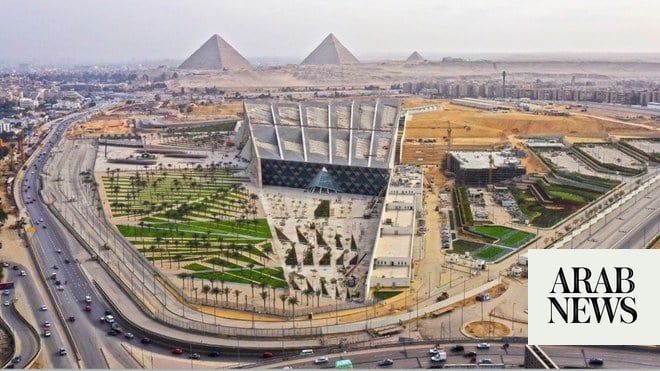
MAKKAH: Archaeological discoveries in the Kingdom have led Saudis to learn ancient languages like Thamudiyah, Musnad, Lihyaniyya, and Safaiyyah so they can decipher inscriptions and carvings on rocks to unlock the secrets of the past.
Saudi universities have dedicated courses for these languages and ways to learn them, which is having a positive impact on exploratory trips and enhancing the historical richness of Saudi Arabia. This academic and linguistic development has also helped to raise awareness about the importance of heritage and fully studying it.
Dr. Jasir Al-Herbish, CEO of the Saudi Heritage Commission, told Arab News that the Kingdom had a heritage that was rich and rooted in ancient cultures and civilizations.
He said that learning ancient languages like Thamudiyah and Musnad was a journey into past eras.
He said archaeology departments at Hail University, King Saud University, and Princess Nourah bint Abdulrahman University focused on these areas and that, through these programs and courses, the goal of learning about the past could be achieved. The curricula provided a theoretical platform, he added, while the student would be responsible for applying what he had learned through fieldwork while studying archaeology whether at an undergraduate level or on a postgraduate program.
He said: “The abundance of information on the internet is a catalyst and a self-guiding channel to decipher the codes and unveil the secrets of the languages for those interested. The interest of a group of specialists has also helped in raising awareness and transmitting expertise in all that is related to heritage and civilizations. Added to this, there is the role of exploratory trips, and published and circulated research that has helped to arouse the curiosity of those interested.
“Gradually, the circle is expanding and it is becoming common behavior, and the rock inscriptions are becoming a memory and an album of tales that are resisting erasure and oblivion due to the qualifications that specialists in Saudi Arabia enjoy globally, which makes them acquire the know-how and knowledge to decipher the secrets of these languages.”
He said there were bachelor’s degree programs to teach ancient languages at the archaeology departments of KSU, Hail University, and Princess Nourah bint Abdulrahman University. There was also the Kingdoms Institute at the Royal Commission for AlUla, an international center for archaeological knowledge and research offering a deeper and more specialist experience.
Local studies indicate the presence of rock inscriptions and carvings in more than 5,000 Saudi sites. These places have thousands of carvings and archaeological inscriptions, and they are preserved through raising awareness about their importance, protecting and rehabilitating them, in addition to monitoring them. HIGH LIGHTS
Local studies indicate the presence of rock inscriptions and carvings in more than 5,000 Saudi sites. These places have thousands of carvings and archaeological inscriptions, and they are preserved through raising awareness about their importance, protecting and rehabilitating them, in addition to monitoring them.
Dr. Fouad bin Daifallah Al-Maghamisi, who specializes in the history of Madinah, said that the Arabian Peninsula had many carvings and inscriptions. They were preserved on mountain slopes and in valleys, while others were on rocks.
He said: “Studying geographical locations that include inscriptions, writings, or drawings from a topographical perspective is not an easy thing, because we are dealing with a social culture that has vanished and that does not have a cognitive or historical source other than what ancient people left behind. And what is more difficult is to try to study them from various aspects and try to know what these symbols, inscriptions, writings, or drawings really mean.”
He added that, due to the large number of languages and the diversity of writings, the Nabataeans reverted to using Aramaic to carve their inscriptions and that Aramaic was derived from the mother language Arabic.
However, some ancient inscriptions showed the extent of the impact on them from civilizations they had come into contact with like Greek and Latin, which indicated that these inscriptions had spread across a wide area, leading people to assume that this language or writing was widespread and common during that historical era.
He said the question on how to learn ancient languages like Thamudiyyah, Musnad, or Lihyaniyya remained a valid one as it was material to ancient history and was one of its sources. It was necessary to decipher its codes and read it according to a systematic and scientific specialization as a historical event would rely on it.
He also said that the inscription was a reliable source and that was why history departments, archaeology departments, and archaeologists had dedicated a large number of studies for specialists and others who were interested.
However, as Saudi Arabia had a large number of these inscriptions and carvings, it was imperative to have learning sessions and workshops to prepare young people who were interested in this field, he said.












